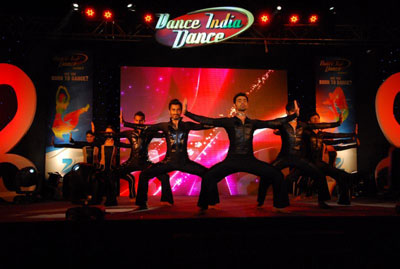 New Delhi:
New Delhi: Dance institutes across India are laughing all the way to the bank - thanks to parents` new-found fascination for TV reality shows.
"There is a big boom in the industry for the past two years. It is amazing to see how the mindset of parents has changed towards dance. They no more frown if their child wants to join a dance class," Atul Jindal, one of the founders of Delhi-based Big Dance Centre, told reporters.
A qualified dancer from a New York institute, the 29-year-old was initially disappointed with the lukewarm response when he decided to make dance his bread and butter.
"It was extremely difficult for them (students) or us to convince parents that dance isn`t a waste of time. Today, the tables have turned," he said, adding the response now is overwhelming enough to keep the staff busy from morning till evening.
In the not too distant past, dance was confined to the 'big, bad Bollywood'- every parent's nightmare. The only possible job profile one could think of was that of a choreographer. Hence, the taboo of dance continued.
Till a flurry of dance reality shows changed the equation.
India's pioneering dance reality show, 'Boogie Woogie', which went on air in 1995, laid the foundation for others like 'Dance India Dance', 'Just Dance', 'India's Got Talent', 'Dancing Queen', 'Dance Premier League','Chak Dhoom Dhoom', 'Jhalak Dikhla Jaa' and 'Nachle Ve' that set the stage for the big leap.
Even cities like Meerut in Uttar Pradesh are not left untouched.
"The mentality towards dance is changing thanks to the reality shows," said Yasmani Shakya, a choreographer who teaches at the Imagine Dance Academy.
"Earlier people didn't know about different dance forms. They just knew Bollywood. But the push these shows have given to dance is manifold," said Shakya, adding people have moved on from the salsa and the tango and are now adding hip-hop, ballet and other forms to their repertoire.
Lured by the idea of fame and money, seeing their children on television, and meeting celebrities, is driving many parents blind. This herd mentality, at times, can be dangerous.
"The middle-class aspirations for glamour can be dangerous. The taboo associated with dance is no more there, but not everyone can be a choreographer. You can pursue a passion as long as it feeds you," Lourd Vijay, founder of Lourd Vijay's Dance Studio in Bangalore, told reported.
"If you are good, reality shows are an excellent platform. But competition has become extremely stiff. So one has to use one's imagination, be observant and learn something every day to be successful," he added.
Shambhu Kumar from Patna felt similarly.
"It is a matter of pride for parents among the community if their child is on a dance show. Be it a small town or a big city, glamour sells and everyone wants to be associated with it," said Shambu Kumar who founded his Music, Arts and Dance Academy in 2008.
From 15 students per class to 50 in a class, the enrolments are growing. But there's a flip side.
"When you see small children on these shows pouting and making vulgar gestures, you just wonder what their parents are thinking. There has to be an age limit. Isn't it cruel? Where is the innocence left?" Shambu Kumar asked.
Many like Amit Jain balance their passion and studies.
"These platforms do come with temporary fame but no life-time guarantee. Anyone can be a dancer after a few classes, but not everyone is born to dance," said Jain who is in his second year of college and is taking dance classes.
In an attempt to treat dance as a 'serious profession', Jindal started a three-month professional dance course, Professional Dance Study Programme, in 2009.
"We really want people to take it (dance) seriously. Dance is not about just knowing a few steps of a particular dance. It's about mastering the technicalities," he said.
"In our course, we also speak about injury prevention and exercises for strengthening muscles. There are also yoga sessions and diet-sessions. It is important to listen to your body and understand it," Jindal added.
From nine students to 120 students now, Jindal`s institute charges Rs. 20,000 for the course.
Aren't western influences corrupting Indian classical dance forms?
"It is a cycle, I believe. Just like the 70s and 80s have come back in Bollywood and fashion, we too will be going back to our roots," Jindal said.
 New Delhi: Dance institutes across India are laughing all the way to the bank - thanks to parents` new-found fascination for TV reality shows.
New Delhi: Dance institutes across India are laughing all the way to the bank - thanks to parents` new-found fascination for TV reality shows.